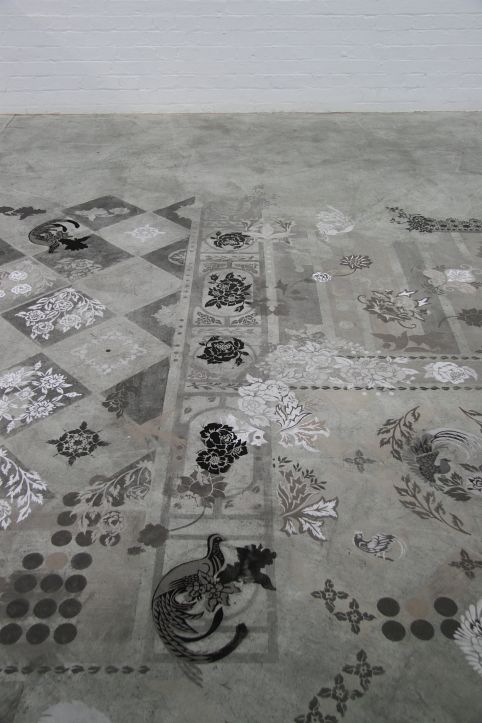The Silence of Becoming and Disappearing
The Silence of Becoming and Disappearing was a project in which 10 ephemeral site-sensitive dust works were created and installed in private homes. The works were developed in consultation with the residents - who were also responsible for choosing the duration of the installation and who would view the work. The imagery created for each piece was influenced by decorative features in the homes such as wallpaper, carpets and family heirlooms, as well as by stories shared with me by the residents - such as histories of the house, family myths, hopes and dreams for the home. Here are a selection of images from the project. The installations varied from: 18 meters of porch 2 hours for 200 guests; a coffee table covered, family and friends, one year; under furniture in a communal boarding house, residents and 20 school children, several weeks; two draws, one viewer, forever.
Residents experienced the work during stages of construction, viewing and deterioration - natural accidental and deliberate. In one home the installation lasted just a few hours, in another it was be protected by glass for over a year, some residents just let it take its natural course allowing further dust to settle and accidental footprints to make their mark, one home let the weather decide and another hid it away in a draw hoping it would last for forever.
As well as determining the duration of the work, the residents also decide who the audience was. There was a possibility that the audiences could be as private as one person, however, the residents overwhelmingly chose to invite people to view the dust work. These audiences varied: from Boarding house residents to a private cocktail party for 120 guests, from regional craft communities to curators of art institutions, from close family, friends and pets to complete strangers.
The type of dust used in each home was also considered: on a marble
floor, marble dust will be used, in the Grampians, ash from bushfires
will be collected, dust was gathered from sheds, artists
studios, behind couches and dug out of vacuum cleaners. Perhaps the most unusual and beautiful material was the
cigarette ash used on a French polished table.
































